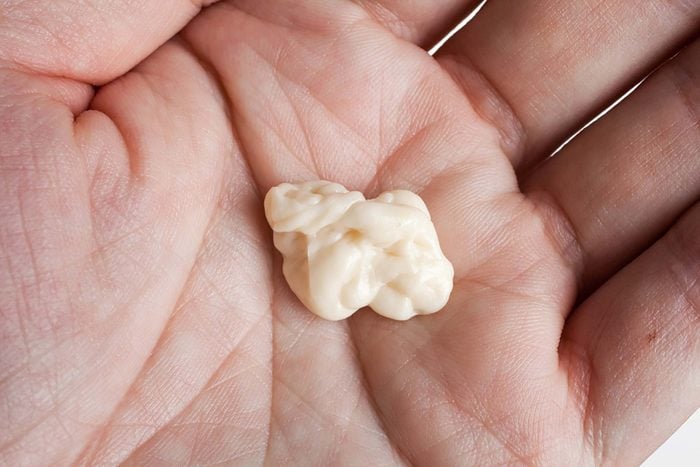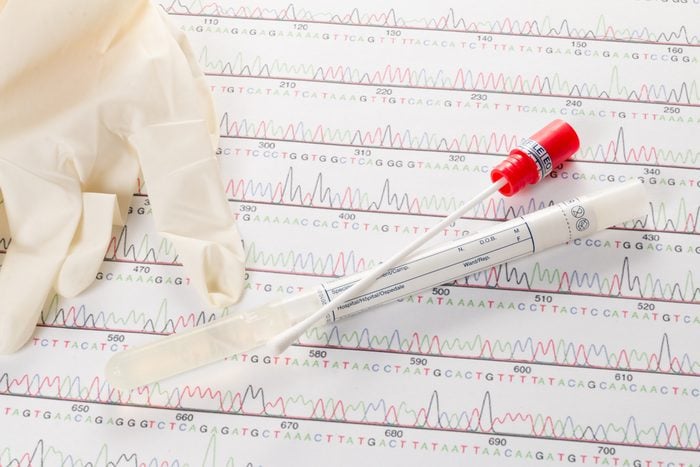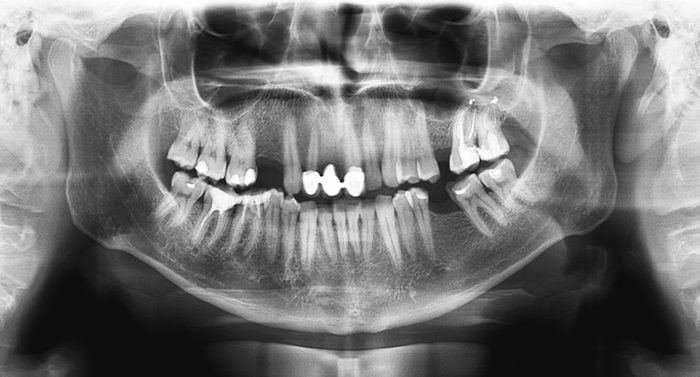
The murder of the Harvard grad student
On January 7, 1969, 23-year-old Jane Britton failed to show up for an exam. Her boyfriend, who went to her apartment to look for her, discovered her dead of blunt force trauma. The boyfriend was ruled out, as was everyone else Jane knew, and the case went unsolved for years—even after the advent of DNA testing in 1985. But investigators had preserved crime scene evidence, and a breakthrough arrived in 2012 when crime scene DNA was found to match that of a serial sexual predator and murderer who’d been convicted back way back in 1973. This mystery was finally solved, thanks to forensic advances. Perhaps the same will happen for these 15 toughest cold cases.

The case of the girl in the bathtub
In December 1977, the body of 16-year-old emancipated teen Sharon Schollmeyer was discovered by her mom—strangled to death in six inches of bathwater in her apartment. With no suspects and only waterlogged evidence (from which DNA extraction presents challenges), investigators remained stymied… until 2013. The advent of the “M-Vac,” which helps pull DNA off waterlogged material made it very clear who’d killed Sharon: the same building manager at Sharon’s apartment who’d let Sharon’s mom into the building more than 30 years earlier.

Between a rock and a hard place
In 1995, the body of 17-year-old Krystal Beslanowitch was discovered along the Provo River in Utah, her skull crushed. Since the murder weapon appeared to be a rock and extracting DNA evidence off rocks was almost impossible at the time, the investigation went nowhere. But in 2013, M-Vac came to the rescue again, this time allowing DNA to be extracted from the surface of a piece of granite. The DNA from the cold case matched that of a local airport shuttle-bus driver who at the time had recently been released from prison after serving sentence on a 1987 murder conviction. The two-time murderer Joseph Michael Simpson is back behind bars, where he’ll remain for the rest of his life.

Who was Buckskin Girl?
In April 1981, the body of a young woman was found in a ditch along an Ohio highway. She had no identification, and no one came forward looking for a missing woman matching her description. Eventually, “Buckskin Girl,” as she came to be known because she was wearing a buckskin poncho, was buried, but not before investigators preserved crime scene evidence, including extensive photos of the girl’s face. Their work paid off with the advent of forensic facial reconstruction, and in 2018, Buckskin Girl finally had a name: Marcia Lenore King. Unfortunately, there’s no forensic evidence to date that can help track her killer.

The telltale notes
In 1988, when 8-year-old April Tinsley was abducted and murdered in Indiana, DNA testing was fairly routine, but its utility was limited because the database was still small. For 30 years, her case went unsolved, even as the killer taunted authorities with anonymous handwritten notes. But by 2018, the DNA database had grown to include not just convicted criminals but also regular folks interested in tracing their ancestry. And sure enough, the DNA from the notes matched that of two brothers on a public genealogy site—one of whom ended up confessing.

A sticky situation
In 1981, 24-year-old Nova Welsh was strangled to death in Birmingham, England. Her body was found three weeks later, stuffed inside a cupboard that was sealed shut with a piece of chewing gum. The crime went unsolved for nearly 36 years when DNA extracted from the chewing gum was found to match that of Nova’s former boyfriend, Osmond Bell. He claimed he’d used the gum quite innocently—a simple home repair unrelated to Nova’s death. But the DNA also matched that on an envelope containing an anonymous letter pointing the finger at someone else for the murder (which is, itself, a known forensic counter-measure).

The first case of DNA phenotyping in Louisiana
In 2009, Sierra Bouzigard was found murdered in Moss Bluff, Louisiana, but the case quickly went cold because the DNA evidence didn’t match anyone in the database. Then in 2015, using a relatively new technology called DNA phenotyping, the DNA evidence was used to simulate what the killer would probably have looked like. Soon after, the sketch of a white male was recognized, and the killer was brought to justice. Some day advances in forensic science may make unsolvable cases a thing of the past. Even today science can be used to explain 13 of the world’s “unsolved mysteries” we’ve been puzzling over for decades.

The “ask and you shall receive” case
In 1999, when Marianne Vaatsra was found murdered, police had lots of suspects, but even with DNA testing, the case remained unsolved—for the simple reason that the DNA traces found on Marianne’s body failed to match anyone whose DNA happened to be in the system. Then in 2012, police took another look at the cold case and decided to ask all the men who lived within five miles of the crime scene to submit their DNA. Turned out the killer was a middle-aged neighbor…who’d willingly submitted his DNA when asked—putting him just about on par with these 38 dumbest criminals of all time.

A little bird told me
On Christmas Eve 2001, Kevin Butler was stabbed to death during a break-in at his Dallas apartment. Also stabbed to death during the event was Butler’s cockatoo named “Bird.” Investigators found human DNA in Bird’s beak and on his claws, and it matched an acquaintance of Butler who turned out to have had a financial beef with him. The man had wounds consistent with having been pecked and clawed by a cockatoo—making Butler’s killer the murder squad equivalent to these 15 unluckiest dumb criminals ever.

The hair of the dog
The 2001 murder of 16-year-old Leanne Tiernan, who was discovered buried in a shallow grave in West Yorkshire, England, might never have been solved if it weren’t for strands of dog hair that the forensics team found on her body. Turned out the DNA in the dog hair matched DNA of a dog owned by a man known to hunt in the woods near the crime scene. It was the first time doggie DNA was used in Britain to identify a murderer.

The hair of the cat
In 1994, Shirley Duguay went missing from her Prince Edward Island home, and while police suspected her ex-boyfriend, they couldn’t find a way to connect him to Shirley’s disappearance. But the investigation yielded a jacket and shoes, both stained with Shirley’s blood, and inside the jacket lining were 20 white cat hairs. They looked like they might have belonged to the ex-boyfriend’s white cat, and sure enough, a comparison of the cat’s DNA and the cat hairs were a match.

His poetry amounted to a confession
For 30 years, the 1987 rape and murder of a 21-year-old law student in Milan had gone unsolved, even though a confessional poem describing the scene of the murder in incriminating detail, a copy of which had been anonymously sent to the student’s parents on the day of her funeral, had been discovered in the home of one of the victim’s ex-classmates. This sort of circumstantial evidence would not be enough to convict a killer… unless the handwriting could be matched to the accused. In 2016, that’s precisely what happened when a handwriting analyst was able to connect the ex-classmate to the poem.

The undoing of Ted Bundy via dental impressions
In 1978, three women were murdered at Florida State University. One of the women was found with bite marks on her buttocks, which investigators said were distinctive in that the biter’s teeth were not only crooked but chipped. A forensic expert testified at the trial that the bite marks matched the teeth of Ted Bundy, who police had suspected of several other murders in other states. Were the case to be tried today, such evidence would not be used—bite mark impressions have led to wrongful convictions and it’s not considered reliable science—but back then coupled with eyewitness testimony it was enough to convince a jury. Today investigators would be able to extract a DNA sample from the bite marks. Bundy was, in fact, the killer in the case, as well as at least 29 other murders. He was convicted as a serial murderer and executed in 1989. Hopefully, forensic science will continue to advance so that we’ll someday have answers to even these 20 baffling cases.
